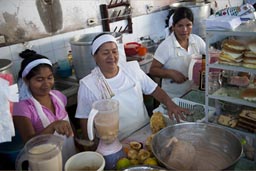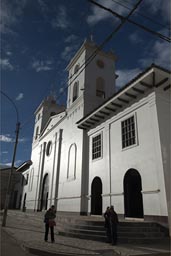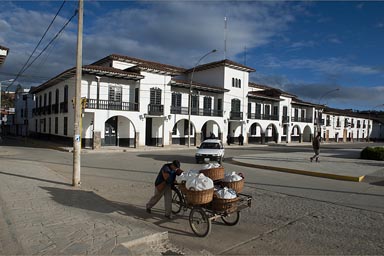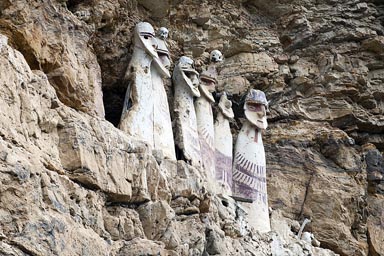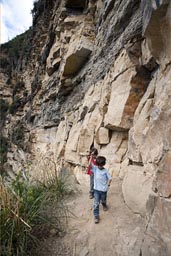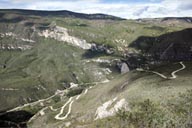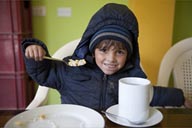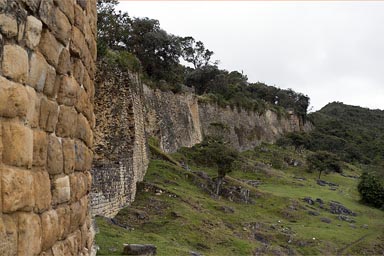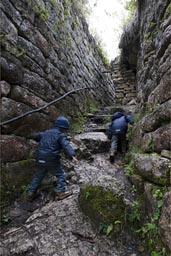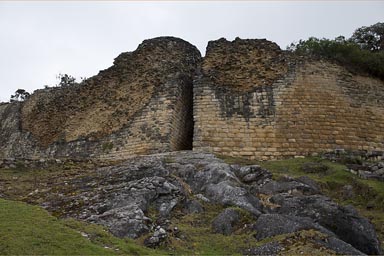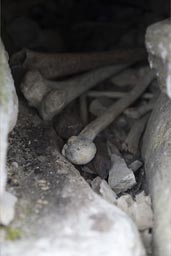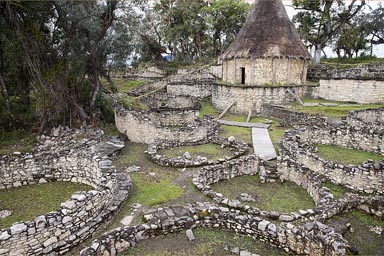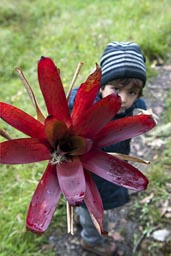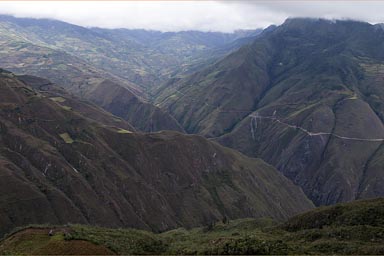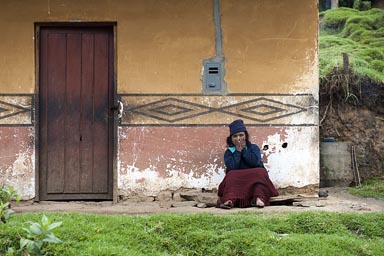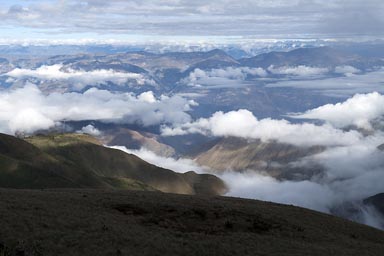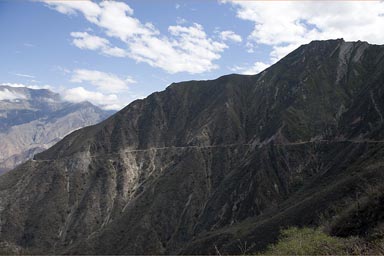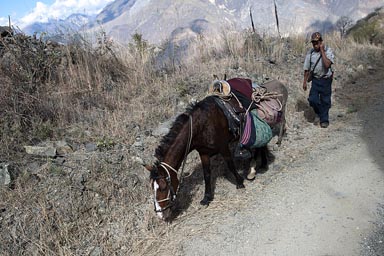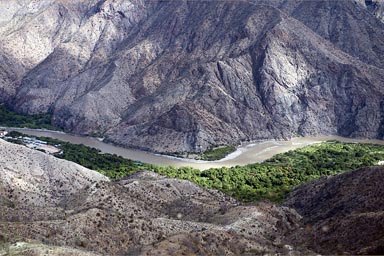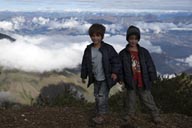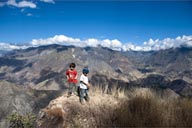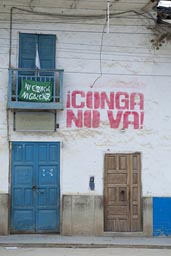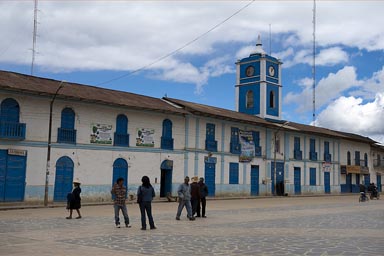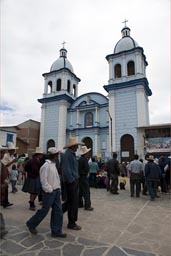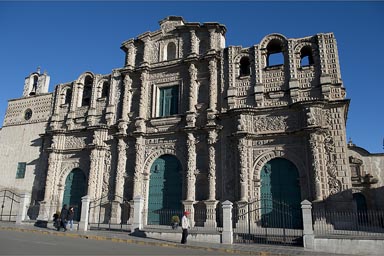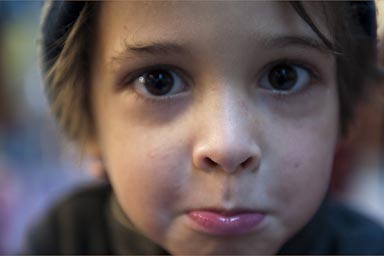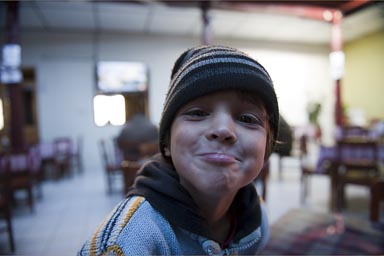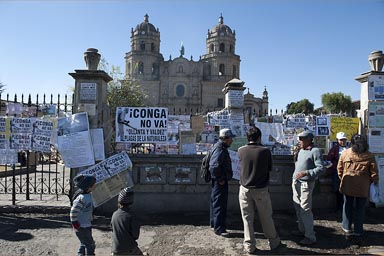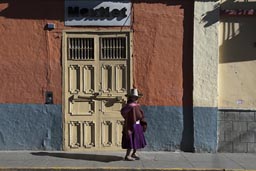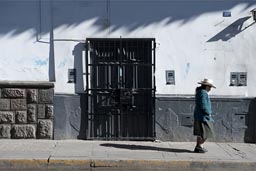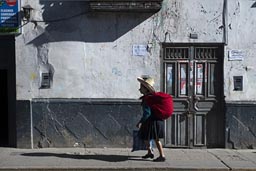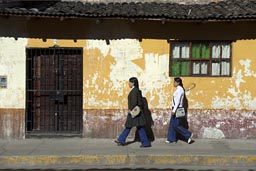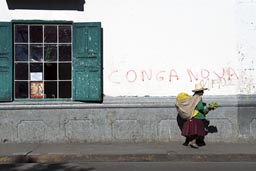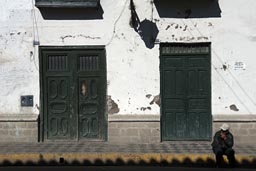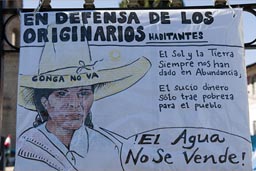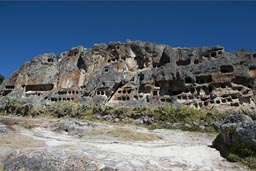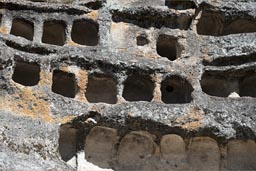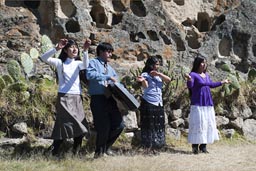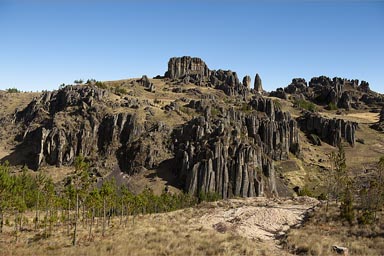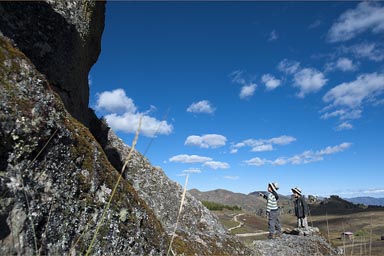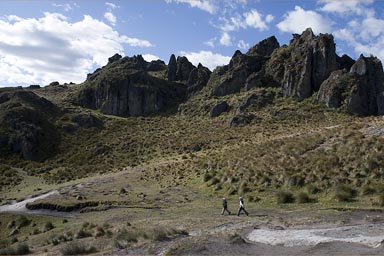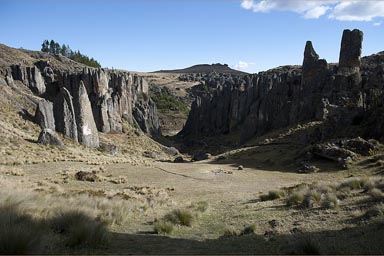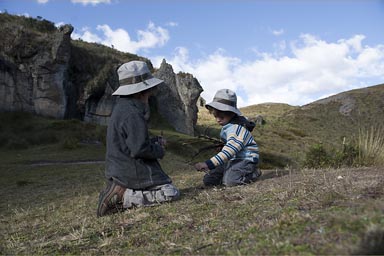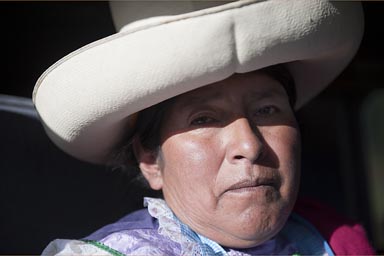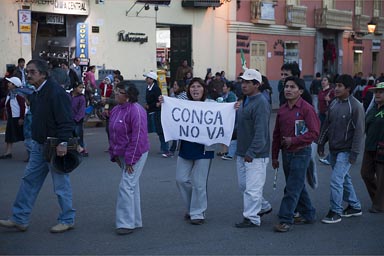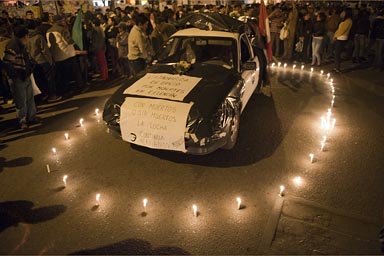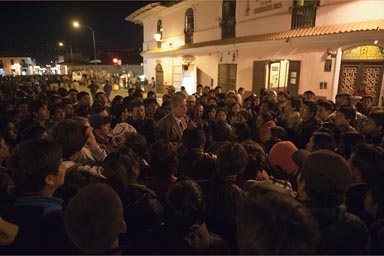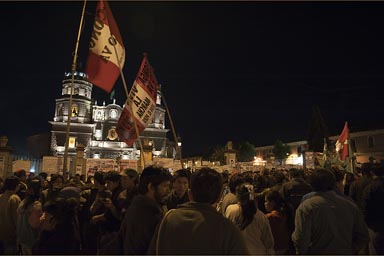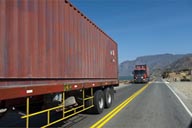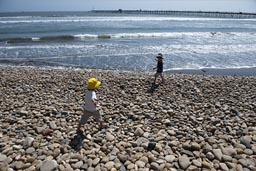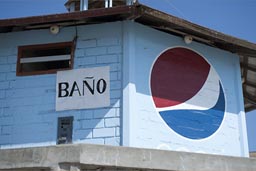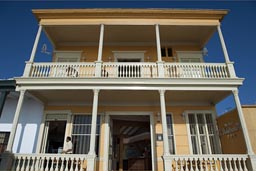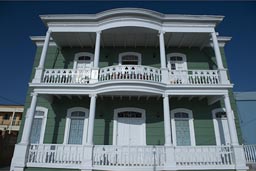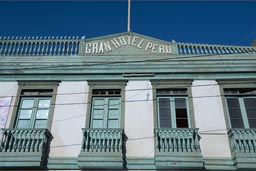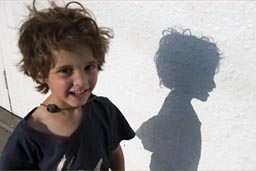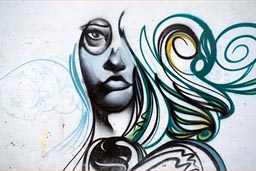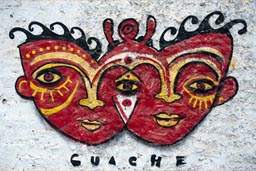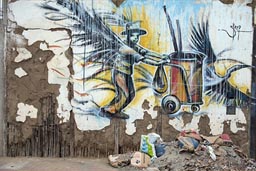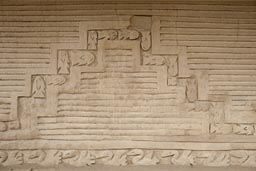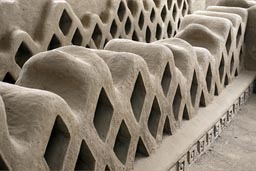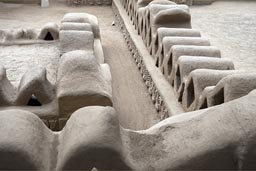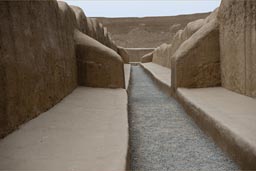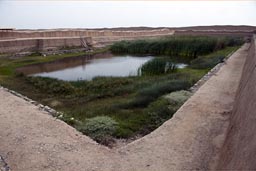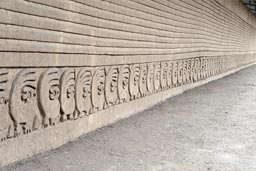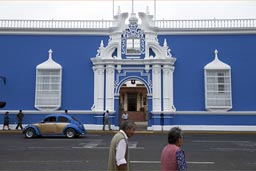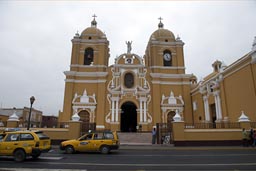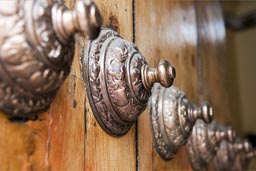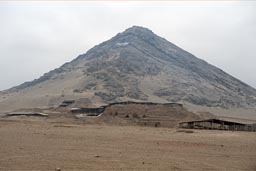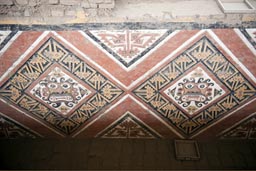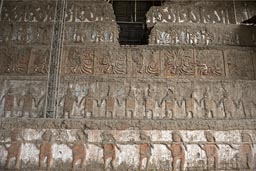www.thisfabtrek.com > journey > south-america > peru > 20120703-cajamarca
Back to where we almost already were, Chachapoyas.
Download GPS (KML) track/waypoints.
A juice in the buzzing market of Yurimaguas and if gives us the diarrhea back, they add some water, and it's always the damn water that is contaminated. The van starts and we are off and the boys are tired and sleep through long stretches of the trip. In Tarapotu I buy Bananas, but I don't stop anywhere else, drive till we cross the first Andean range, but our little restaurant from last time is closed. An hour later and we are back in the valley of Utcubamba, another hour later in Chachapoyas, and there is a restaurant/hostel right on plaza de armas, it is cold inside, it is more a courtyard with the top open, but food is really good, pechuga a la plancha and white rice for hungry Daniel and David.
This is Karajia!
Fairly isolated from the outside world, the small capital of the Amazonas department, Chachapoyas, shines white and bright in the first light of the day. In a little hip backstreet cafe, where only tourists go, we meet Kevin, and this is one of these rare occasions that you actually meet somebody who writes the Lonely Planet, Kevin suggest to visit Kuelap. But this morning we are headed elsewhere first, to Karajia, funeral site, with statues or sarcophagi, certainly bones and sculls buried and sticking out up high in the cliffs, and Karajia is so far away from Chachapoyas, on the other side of the Utcubamba valley, the roads are hard, long, steep, and winding, Karajia sits at an altitudes of 2,800m.
This is Kuelap!
Up early and we are off to Kuelap on another morning, and the road is equally long and hard and steep and winding, this one is almost a match to the Bolivian (North Yungas) Death Road, some actually say this one is worse, as it winds its way to the far end of the valley to Choctamal, always perched into canyon walls. The drizzle distract, clouds hang deep, again it takes forever and we have not even had breakfast this morning, thanks there is a restaurant that serves rice and eggs in the cold and the boys dig in, stuffed in their anoraks. Then we find Kuelap at 3,000m, and lp-Kevin already working, up-dating on-the-groud info for the new Peru edition.
Kuelap sits on top of the cliffs, it feels like a fortress, a refuge for the people of the Chachapoyas culture (till colonial period), 600m of walls, a height of up to 19m, extra steep gateways, 3 levels of protection, the defensive character is obvious, but who were these ancient people protecting against? Little is clear, we stroll around, stunned by the architecture, also the site contains many ruins of what where houses, somewhere the boys move a stone, and human bones come to daylight behind, how many burial places like this exist?
The nicest thing about Kuelap is that there are, apart from Kevin, almost no other visitors, and this is a Sunday. We drive down these 40kms, and while the boys sleep I realize in the villages the old that sit outside their houses to warm the limps and the wall paintings behind bear the same decorations we have seen in Kuelap.
This could well be the other 'world's deadliest' road.
We reach Tingo back down in the Utcubamba valley and follow it south till Leymebamba, somewhere a colectivo taxi has broken down and we take an old, and his wife and adult son, I later would shake the crippled hands of the old who sits in the front and bears a sharp animal smell. I inquire 'how long the road would be to Cajamarca', but his response is of disbelief, he has no clue 'cause he has never been. His son though tells me: 8 hours at least.
In Leymebamba we are up early again, and the dirt road leads immediately high to 3,600m, one of these forever winding ascents where you don't move in distance away from Leymebamba, only higher, and at the early hours the pass is foggy and cold. Then we drive down and this could well be the other 'deadliest' road in the world, a one lane track, and the abyss always just an inch away. We drop to an elevation of 900m and Balzas, mango trees grow, this is the desert, the hot and dusty of the Marañon River valley; yes here we have him again, the grand Amazon tributary which we road on in a lancha a lot further downstream (see previous story). Here the Marañon represents the border between the Amazonas and Cajamarca regions. We have some eggs and rice in a restaurant, and Daniel and David are amused by a poster of an oil or tire manufacturer featuring a bare-breasted woman, 'would you want to kiss her papa?' they ask.
Then we drive on and I am glad we have had lunch, because the road that follows will tire us the rest of the day. 'Cajamarca 160kms', it says on a sign, and we immediately climb back up to 3,000m, almost same as on the other side.
Cajamarca conflict.
GPS shows 3,089m before we roll down to Celendine.
Toño warned me a few weeks earlier, 'Cajamarca might not be safe', civil unrest, protests against a mine, clashes with police. So I am not unaware of the problems, but know fairly little about the conflict, and today I will learn quickly, plunge right into it.
'Conga no va!' is painted on almost every house, Conga isn't! And energy is a bit tense in Celendine, to say the least, we park on blue and white plaza de armas, where the demonstrations have been ongoing for months.
The gigantic area where the Newmont mine is planned is near, surrounded by mountains, there are 4 lakes with the gold underneath, and they will go forever in the process. The campesinos who live here and about everybody else in Cajamarca are rightly concerned. The mostly indigenous people have a title to the surface of the land, whereas underneath is government property, and the plan is to dig down 500m, take out and process everything, what about the water they ask? Queso si, agua no hay! Read the graffiti. Cheese yes, water we don't have.
On the plaza we mingle with the crowd, a woman asks me to speak to the crowd, and I wind out. What should I say? 'No estan solo! You're not alone, the world is watching!' My Spanish is still so poor.
But the feel is that gringos are not really wanted here at the moment, and I – at least have a gringo numberplate, we better get lost! Asking for the way an old man sends us intentionally in the wrong direction. This is the 2nd of July.
Cajamarca and Conga.
From Celendine we have another 3 hours of mostly bad roads that lead us over 3,600m. We get to Cajamarca late and I am worried about the strikes, but all is peaceful and friendly and we sleep right on plaza de armas near the nightly protests. Just the heralded pizza in some back street restaurant is bad, they do almost everything wrong that can be done wrong. The boys who wanted pizza so dearly, now reject with 'is not good' and I have to down the slushy sh!t.
Morning after D&D get rice and eggs, their standard staple, I try some delicious famous cheese, there is a nice local clean restaurant just around the corner, and TV is full of protest coverage.
This morning we are off to Otuzko negropolis, ancient burial site, graves carved into rock, and a local singer and band record a music video in front. The morning is still cold and we need to wash, Baños de Inca is near, the thermal baths and pools do us well.
Late lunch is delicious in the same restaurant back in Caja, and a guy comments the events on TV 'it's burning everywhere'; TV also shows protests from Cuzco and elsewhere for different reasons than here. We head back out and climb high on more bad roads to CumbeMayo, and the chimney rocks want to remind of Turkey's Cappadocia, there is an aqueduct, about 1,000 years old, and Daniel and David want to make fire near-by, rubbing wood on wood, like the old Indians.
Before sunset we give a ride down to Cajamarca to an old indigenous couple, back late on the plaza the boys play with the campensino boys, 'vamos amigos, vamos...', and round and round the protests go. The Conga mine demonstrators are much more numerous tonight, the shouts are louder, there have been fatalities in Celendine, 3 people were killed in police clashes, but numbers not so clear yet, still counting. A woman all of a sudden talks to us in perfect German, she's married to a German, lives in Germany, has twin daughters herself, 'provoked clashes' she explains what happened in Celendine.
So all goes well until about ten, the demonstration looks more like an Easter procession around church, candles are being lighted for the dead, all is still peaceful, and the boys still play on plaza de armas with their new friends. But then hell breaks lose when hundreds of riot police, and they come from elsewhere, storm the plaza on foot and pick-up trucks, throwing bombs of tear-gas! Our new friends, and they have horror written all over their faces, especially in light of what happened during the day in Celendine, suggest we stay in their house and urge to quickly drive off. So we do, and I get a bit nervous myself, while the police pick-up trucks chase other cars, down the alleys that lead away from plaza de armas.
20 minutes later we and the van are holed up in the garage of the amazing friends, they are all shook and terrorized, but over a glass of Peruvian red wine we calm down and contemplate what just happened, our situation, and how we might get out of here. Talk is of a state of emergency, the best thing is that we leave very early next morning, because under emergency rules police might refrain from nothing; yes, let's try to get out while we can. And outside the sirens go, and we hear the explosions from a bit farther away, and D&D are tired and sleep happily. (Read the criminalization of social protest in Peru). This is the 3rd of July.
So we wake at 6, early next morning, and we drive out without police checks, and we drive the highlands of Cajamarca and the convoys one after the other, 9 in total, roll the other way, carrying mine supplies, containers, machinery, fuel; and it makes me think that the Conga project is well under way.
Well under way..., I cannot get it out of my head, and who stands in the way is shot/killed. American corporate history is being continued, when was it since United Fruit, over to Texaco/Chevron, that a US-corp did business in Latin America without killing? And sadly two more people would be killed this 4th of July in Cajamarca.
Pacasmayo, Huanchaco, Trujillo, Chan Chan, Huaca del Sol y de la Luna.
We hit the coast and Pacasmayo which has blue houses that shine, amazing ceviche de camaron and decent pizza. It also has a big-pebbles beach and the boys find fun throwing stones at each other, Daniel hits David on his cheek, luckily just the cheek, and I wonder how quickly I do need to get really ferocious, and not just scream from the sidelines.
Next we hit Huanchaco and the white fog.
We see Chimu Chan Chan (850-1,470 A.D.) in white fog, largest pre-Colombian and pre-Inca archaeological site, which is near Trujillo, so we see Trujillo in white fog
Subsequently we see Moche Huaca del Sol y de la Luna (200-800 A.D.) in white fog; yes, Moche people in 800 A.D. decided to become Chimu people and moved their city some 9kms.
Chimbote feels really unsafe, you don't want to park here, we find peace in Tortuga Bay and beach, but since Pacasmayo the white fog has gotten stuck to us, but that would change soon.
www.thisfabtrek.com > journey > south-america > peru > 20120703-cajamarca

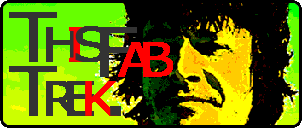
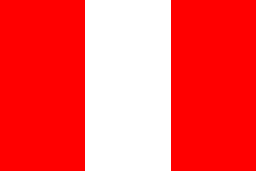
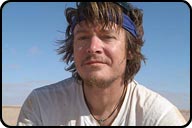
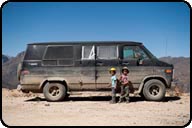
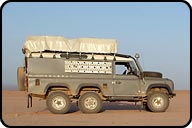

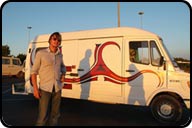
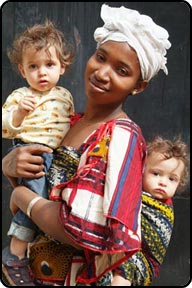
 contains Festival/Fiesta/Art photography.
contains Festival/Fiesta/Art photography.
